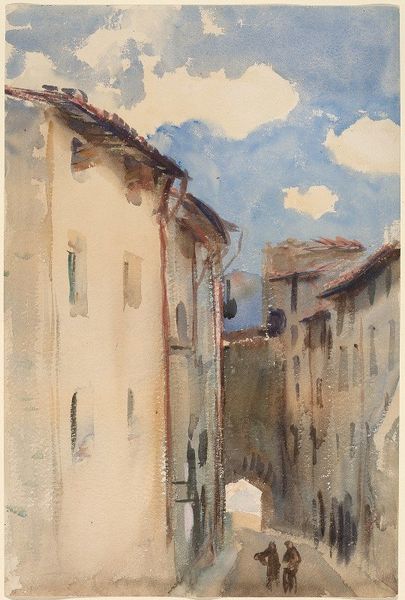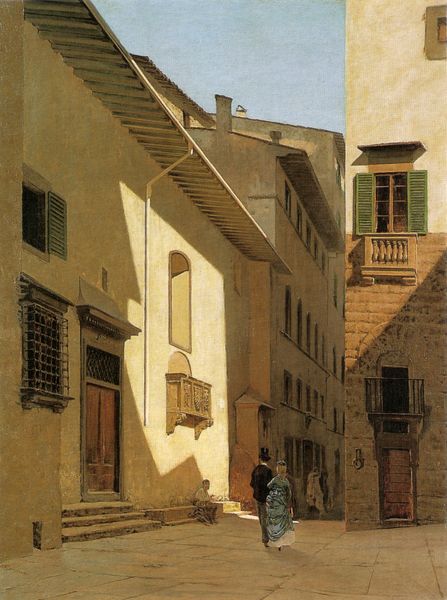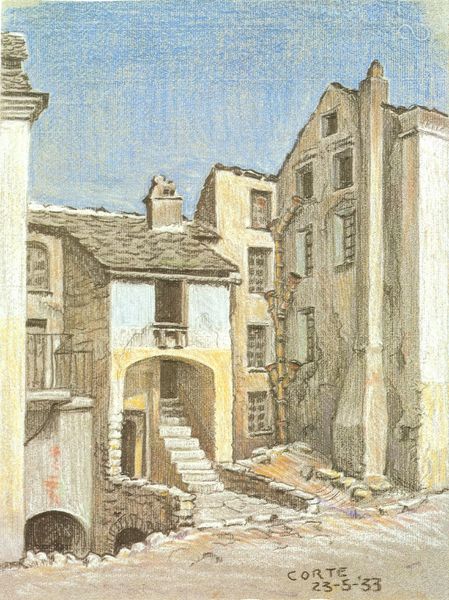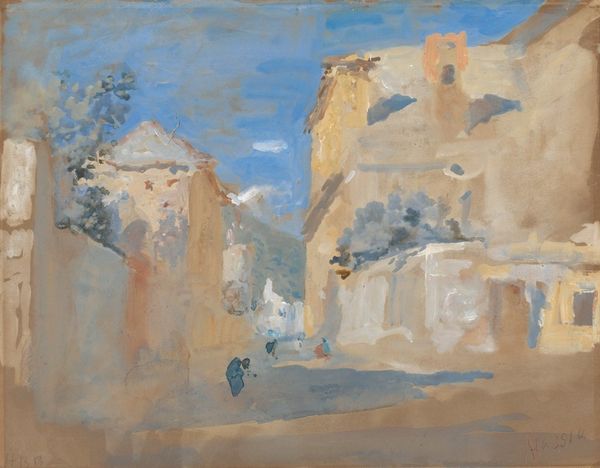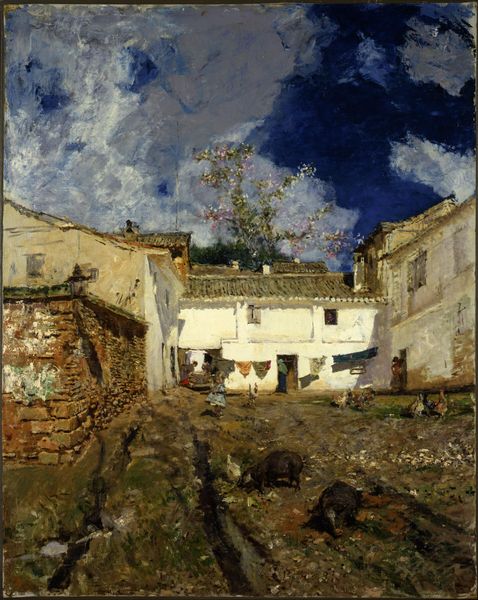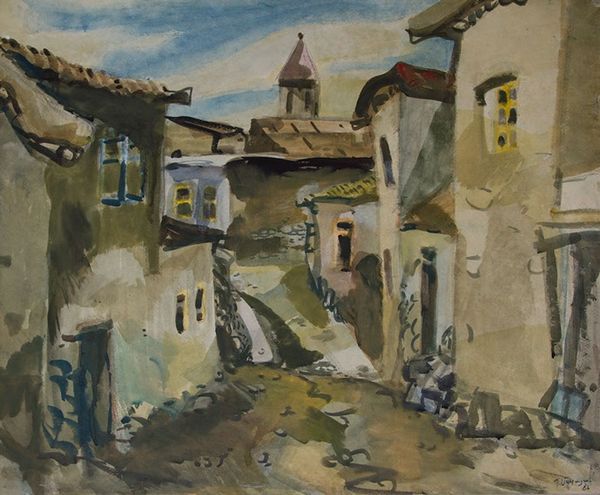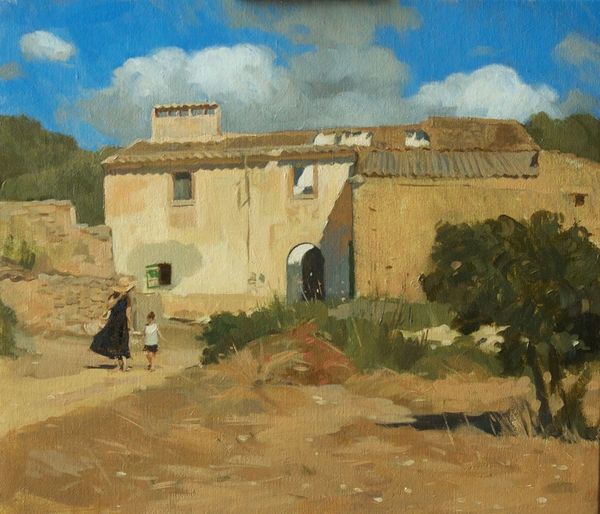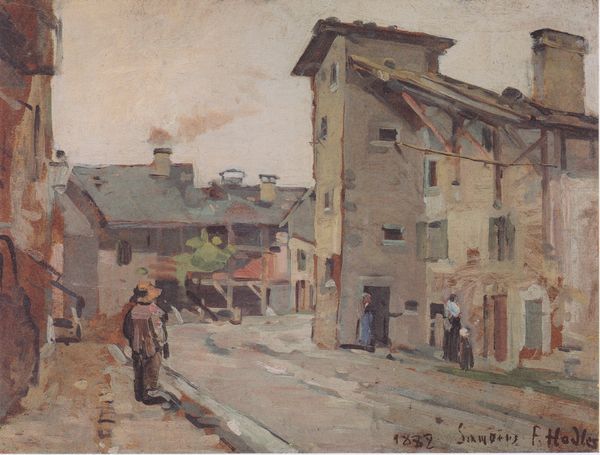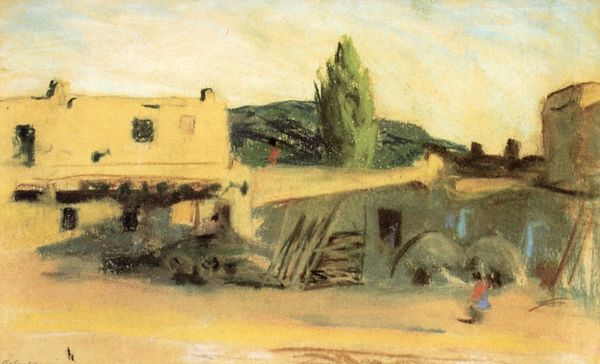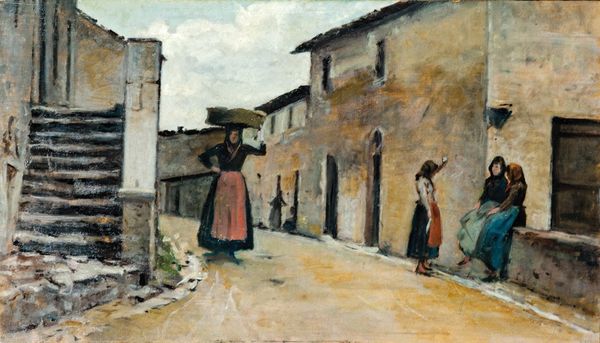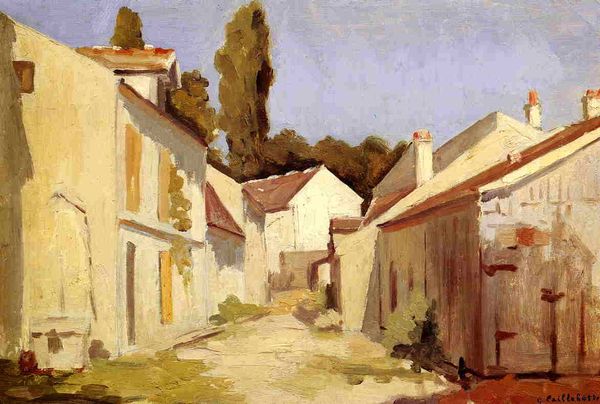
painting, plein-air, watercolor
#
urban landscape
#
painting
#
impressionism
#
street view
#
plein-air
#
house
#
oil painting
#
watercolor
#
cityscape
#
street
#
watercolor
#
historical building
#
building
Copyright: Public domain
Curator: Here we have Childe Hassam's watercolor, "A Street in Denia, Spain," painted in 1883. What strikes you initially about it? Editor: It feels almost… bleached. The light is so intense it drains the color, leaving this sort of austere, sun-baked impression. Curator: Yes, Hassam really captures that Mediterranean light. The intense sunlight speaks to broader orientalist portrayals of Spain that focused on the perceived starkness, otherness, and exoticism of the country. This aesthetic reduced the complexity of Spanish society to a romanticized and often inaccurate image, shaping European and American perceptions. Editor: And it’s interesting, this bleached effect, considering the watercolor medium. You'd expect fluidity and translucence, yet he’s almost fighting the material to achieve this solidity. Curator: Indeed. And it's not just the light, but how it interacts with the urban fabric. Notice the traditional architecture, the way the houses are rendered; each building seems to rise up from the social context, providing a framework for daily existence. Editor: These white buildings are quite captivating, they're built of a very specific material. Do you know if they used stucco here or something else for construction, or if there's lime, like many places use? Curator: It’s plausible that local materials like stucco and lime were employed in construction, materials historically crucial to this area. Looking closer at these vernacular building methods really encourages considering the people who shaped this community, reflecting local artisanal practices and adaptation to the environment. The architecture reflects not just style, but labor and cultural inheritance. Editor: Yes! Thinking of the labor—consider also the artist’s labor in this very traditional "plein air" approach to Impressionism, attempting to depict real life by painting outside. He must've spent a fair amount of time and effort capturing that striking brightness and architectural features with this delicate medium! Curator: Certainly. The very act of creating the work situates Hassam within a tradition of artistic travel and representation, reflecting prevailing cultural attitudes toward Spain at that time. Considering that interplay deepens our understanding of both the artwork and the period that it's portraying. Editor: And to return to the original mood, the work as a whole is evocative, capturing both light and labor. Thanks! Curator: A fitting summary that underlines this moment of history!
Comments
No comments
Be the first to comment and join the conversation on the ultimate creative platform.
